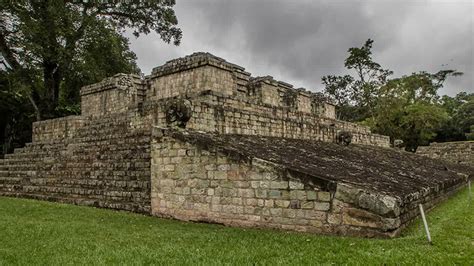Explore the rich history of Syria from early civilizations to modern changes, including the influence of ancient empires and Islamic rule. Learn about colonial period and independence.
Early Civilizations in Syria
Contents
Syria, located in the eastern Mediterranean, has a rich history dating back to ancient times. The early civilizations in Syria played a significant role in shaping the region’s cultural and historical landscape. The fertile valleys of the Euphrates and Tigris rivers attracted early human settlements, leading to the development of some of the world’s oldest civilizations.
The early civilizations in Syria, such as the city-states of Ebla, Mari, and Ugarit, emerged around 3000 BCE. These civilizations were known for their advanced urban planning, sophisticated art, and trade networks that connected them with other ancient societies in Mesopotamia and the Levant. They laid the foundation for future cultures and societies in the region, leaving behind a legacy of innovation and ingenuity.
Furthermore, the ancient city of Palmyra, located in modern-day central Syria, became a vital hub for trade and commerce during the 1st and 2nd centuries CE. Its strategic location along the Silk Road brought prosperity and cultural exchange to the region, contributing to the diverse and cosmopolitan nature of early Syrian civilization.
Overall, the early civilizations in Syria played a crucial role in establishing the historical, cultural, and economic significance of the region. Their contributions continue to be appreciated and studied by scholars and historians, highlighting the enduring legacy of Syria’s ancient past.
Influence of Ancient Empires
Throughout the history of Syria, the region has been influenced by various ancient empires. The presence of several ancient civilizations such as the Hittites, Assyrians, Babylonians, and Phoenicians has left a lasting impact on the cultural, religious, and architectural aspects of the region. The Hittites, for example, introduced advanced military tactics and weaponry, while the Phoenicians brought their maritime expertise and trade networks to the area.
Furthermore, the influence of the Assyrian and Babylonian empires can be seen in the region’s art, language, and religious practices. The Assyrians were known for their elaborate palaces and extensive use of cuneiform writing, which influenced the architecture and inscriptions found in Syria. The Babylonians, on the other hand, contributed to the development of astronomy, mathematics, and literature, which had a profound impact on the intellectual pursuits of the Syrians.
Moreover, the conquests of Alexander the Great and the subsequent Hellenistic period brought Greek influence to Syria, resulting in the spread of Greek language, customs, and philosophy. The city of Antioch, founded by Seleucus I Nicator, became a center of Hellenistic culture and learning, further solidifying the impact of ancient empires on the region.
In addition to these influences, the Roman Empire also played a significant role in shaping the history of Syria. The Romans not only brought their architecture, engineering, and governance systems to the region but also promoted the spread of Christianity, which eventually became the dominant religion in Syria.
Islamic Rule and Golden Age
During the Islamic Rule, Syria experienced a period of great cultural and intellectual growth. The Islamic empire had a profound impact on the region, bringing with it a flourishing of art, science, and trade. The Umayyad Caliphate, which was established in the 7th century, made Damascus its capital, transforming the city into a center of Islamic civilization.
The Golden Age of Islam saw a melding of different cultures and ideas, and Syria became a melting pot of knowledge and innovation. Scholars and scientists from across the Islamic world flocked to Damascus, where they made important advances in fields such as medicine, astronomy, and mathematics. The city became renowned for its libraries and universities, attracting students and intellectuals from far and wide.
One of the most significant contributions of the Islamic Golden Age was the preservation and translation of classical Greek texts. Syrian scholars played a vital role in translating ancient Greek works into Arabic, which helped to preserve and disseminate this knowledge to future generations. This intellectual exchange laid the groundwork for many of the scientific and philosophical developments that would shape the modern world.
Islamic art and architecture also flourished during this period, as evidenced by the magnificent Umayyad Mosque in Damascus. This architectural marvel remains a testament to the grandeur of the Islamic Rule, with its intricate mosaics, towering minarets, and tranquil courtyards. The mosque stands as a lasting symbol of the cultural achievements of this era.
Colonial Period and Independence
During the colonial period, Syria was under the rule of the Ottoman Empire, which had a significant impact on the country’s political and social landscape.
Under Ottoman rule, the country experienced a period of economic and cultural stagnation, which eventually led to discontent among the Syrian population.
The discontent eventually culminated in the Arab Revolt of 1916, during which Syrian rebels, with the support of the British, sought to overthrow the Ottoman Empire and establish an independent Arab state.
However, following the end of World War I, Syria was placed under French mandate by the League of Nations, leading to a period of colonial rule.
It was not until 1946 that Syria finally gained its independence from France, marking the end of the colonial period and the beginning of a new era for the country.
Modern Political and Social Changes
The modern political and social changes in Syria have been significantly influenced by the ongoing civil war that began in 2011. This conflict has led to a complex web of alliances and oppositions, with various domestic and international actors getting involved in the country’s affairs. The power struggle between the Assad regime, opposition forces, and extremist groups has created instability, resulting in widespread destruction and displacement of the population.
Moreover, the influx of refugees and the rise of extremist ideology have had a substantial impact on the social fabric of Syria. Communities have been fractured, and sectarian tensions have intensified, leading to a deepening rift among different ethnic and religious groups. Additionally, the breakdown of essential services, unemployment, and economic hardship have further exacerbated the social challenges faced by the Syrian people.
From a political perspective, the international community’s involvement in the Syrian conflict has created a complicated geopolitical landscape. Major powers such as the United States, Russia, Turkey, and Iran have backed different factions, leading to a power struggle that has greatly impacted the political dynamics within the country. The influence of these external forces has prolonged the conflict and hindered efforts towards a peaceful resolution.
In conclusion, the modern political and social changes in Syria have been deeply shaped by the ongoing civil war and the involvement of various domestic and international actors. The ramifications of this conflict have led to instability, displacement, and a fractured social fabric, while also creating a complex geopolitical landscape that has hindered efforts towards peace and stability.














